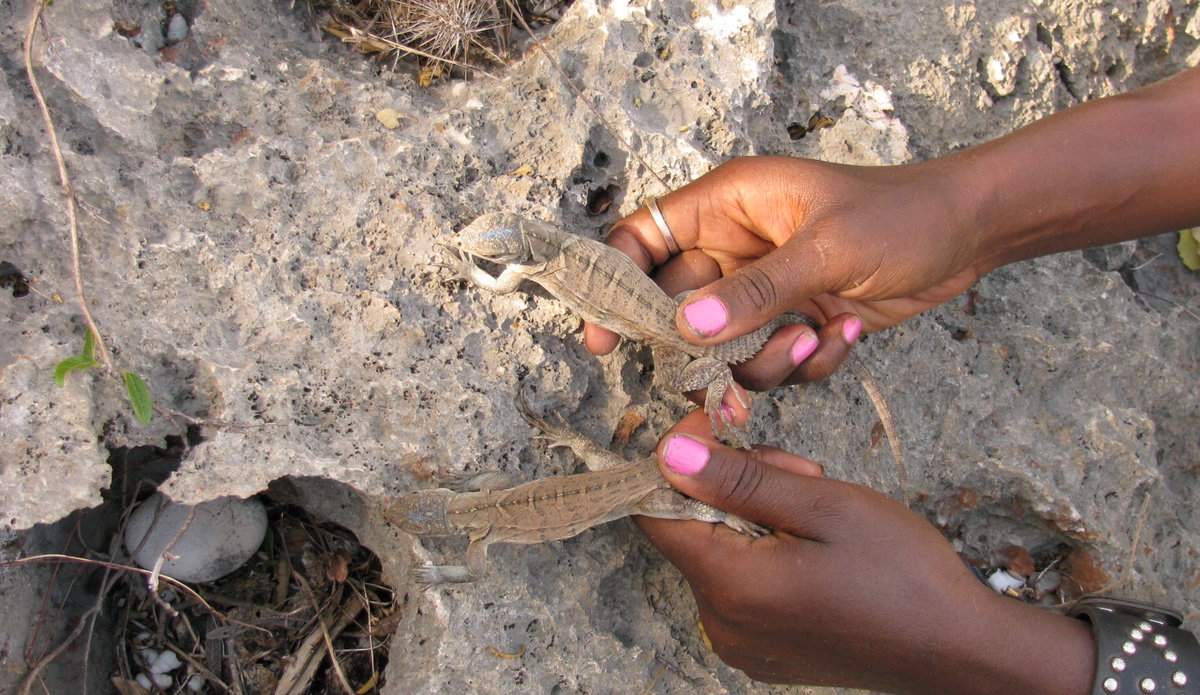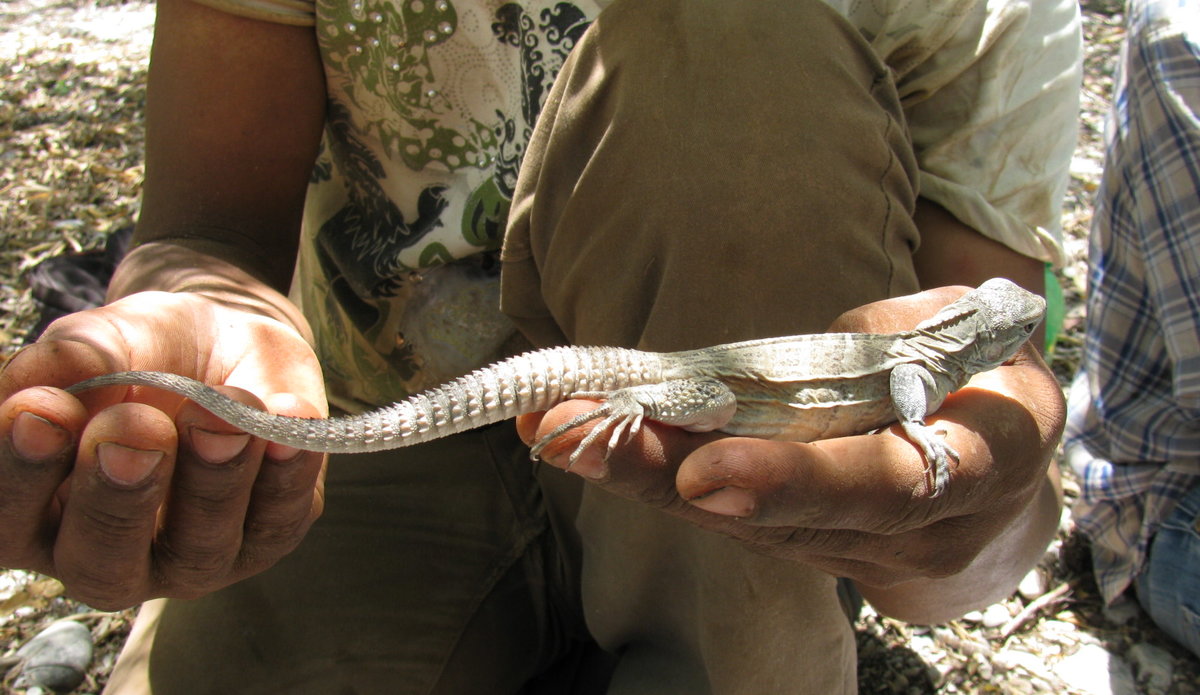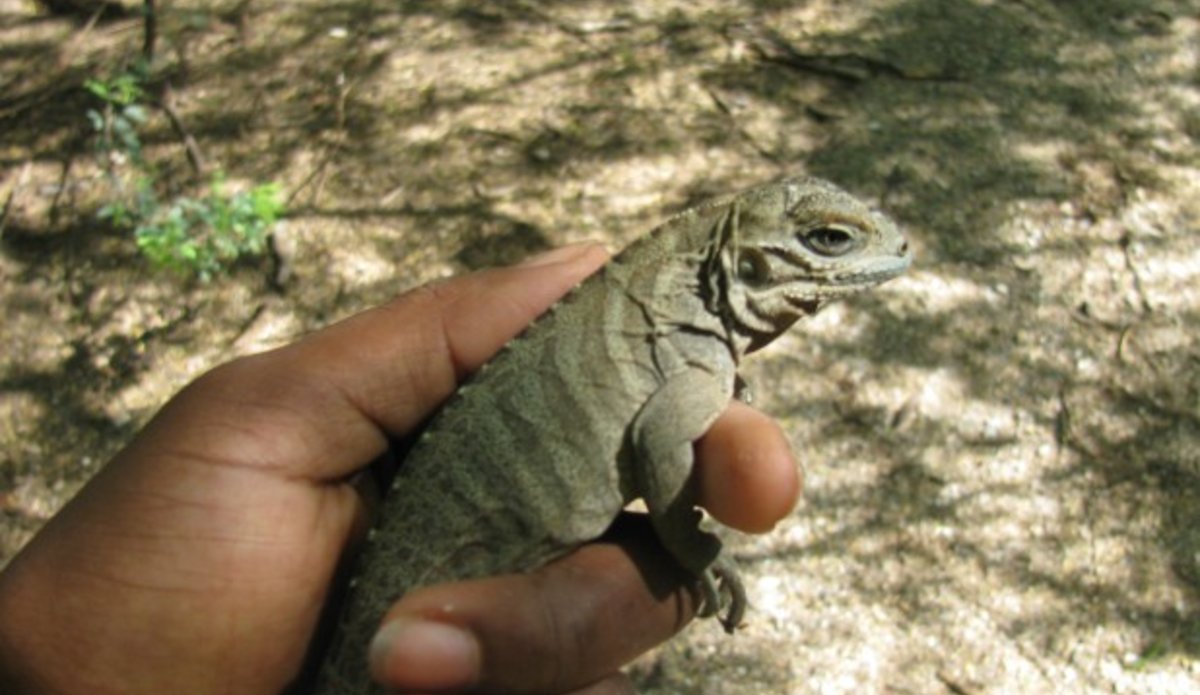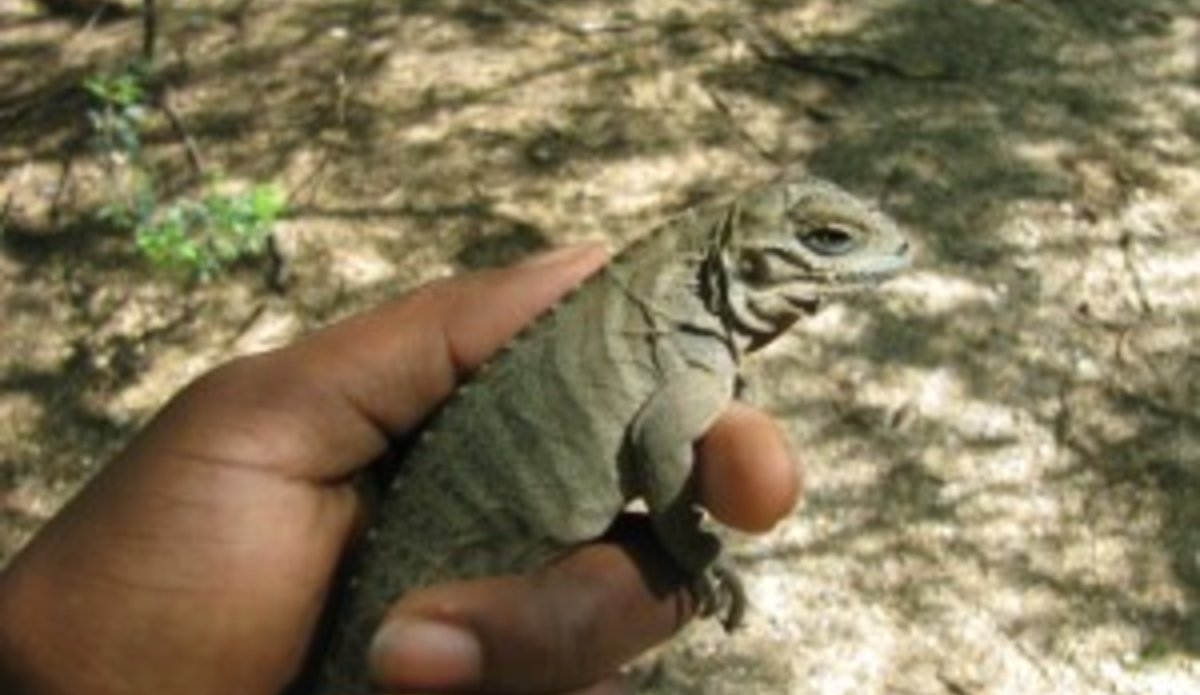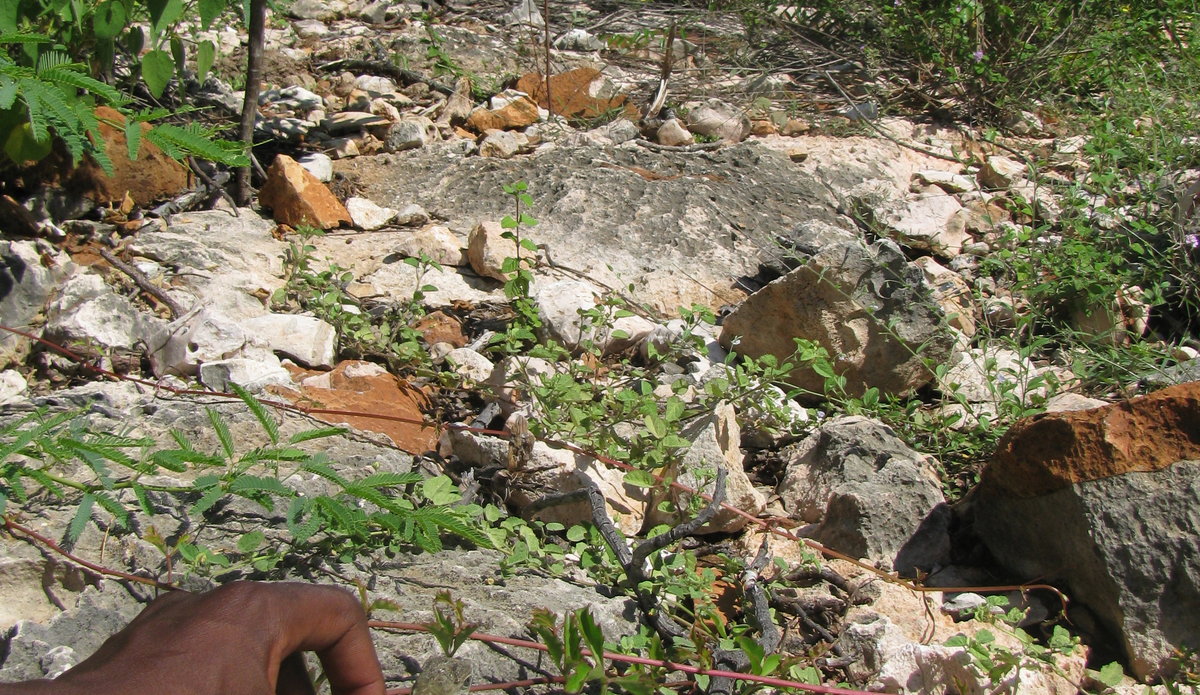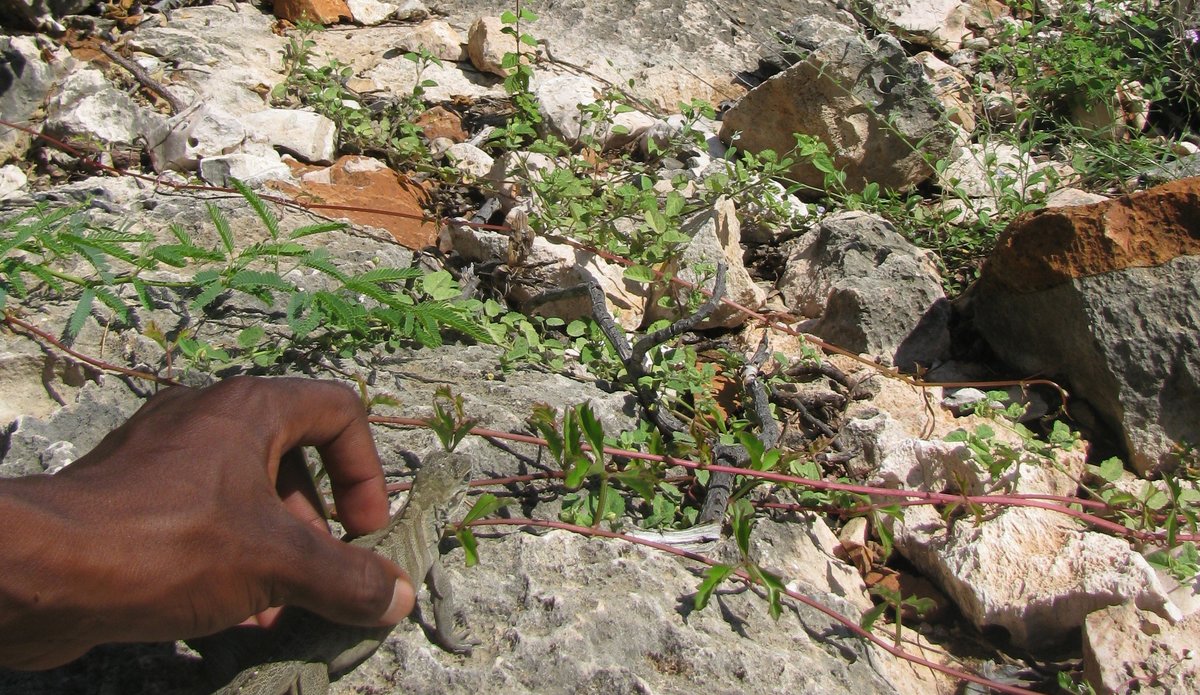Environment: iguanas of Anse-à-Pitre soon to be 'refuged' in a special parkHaïti-Environnement : les iguanes d’Anse à Pitres bientôt regroupés dans un parc.
'Lizards' with red eyes are constantly hunted by the inhabitants of the Southeast town of Anse-à-Pitre - where nests are found.
Scientifically known as iguanas, this species of reptiles, endangered across the planet, can – according to scientists – bring enormous environmental benefits
The significance of the species is not commonly appreciated by the population, but these reptiles are "vital" for biodiversity, says Masani S. Accimé,a veterinarian stationed in Anse-à-Pitre since 2009 to monitor these cyclura ricordii and cyclura cornuta iguanas - two of nine species recorded worldwide .
According to Dr Accimé, these reptiles have the ability to help reforestation in a country that currently has a coverage rate that does not exceed 2%. Because the iguanas' stomachs do not digest certain seeds swallowed in the course of their eating habits, it is proven that they reject these seeds in their faeces which, as a result (of passing through their digestive tract), germinate much more readily.
"They scatter the rejected seeds - and thus participate in reforestation," explains the representative of the International Iguana Foundation (IIF), whose job is to help people understand that these animals are not dangerous and that "without them, biodiversity would be deprived of one of its most important elements."
"For a time, I caught not only fish and seafood, but I was hunting iguanas," confesses the coordinator of a fishermen's association, pastor Augustin Santana - who currently contributes to the protection of the endemic species found in his native town and along the coast of Anse-à-Pitre.
Efforts by the Haitian government and individuals in the area, however, seem far from discouraging the hunting of iguanas - whose flavour and marketability are much appreciated in the Southeast, says the owner of a hotel in Jacmel who once raised a couple of such reptiles.
Included on the 'Red List' of the Union Internationale pour la Conservation de la Nature (IUCN - International Union for Nature Conservation, in English), the iguanas are among those reptiles in danger of extinction because of their dwindling population resulting from the absence of a suitable environment - that is to say, the absence of tranquility, warmth and safety from hunters.
Saving what little remains
With the alarming rate at which the species is disappearing, Dr. Accimé believes it necessary to create a "a municipal wildlife reserve", which she believes would save the remaining creatures in the area.
One idea shared by Momplaisir Ylly, Acting Executive Officer (or Mayor) of the town - excited by the desire to protect the "dry forest of Bouraca" - is to provide harbour to such endemic species as reptiles, mammals, birds and plants that add to biodiversity and protect native habitats.
An area ''rich in biodiversity”, where various plants of medicinal importance in danger of dissappearing, has been identified as a future breeding-ground for iguanas, noted the agronomist Arsène Bastien, Departmental Director of the Ministry of the Environment in the Southeast.
It is in this spirit that civil society, members of foreign organizations and local authorities have opted - as part of a workshop - for the creation of a protected area to which the name 'Parc Cacique Henri' has been given.
"Controlling the degradation of habitat and the hunting of animals in specific and limited areas and prohibiting the production of charcoal" in the town of Anse-à-Pitre , should be part of measures taken to protect the life of animal species and endangered vegetation, advises the biologist, Wesner Saint-Cyr.
And since everything is connected, as Dr. Accimé says, "what we do today to protect iguanas, will help other species tomorrow.” Accimé expects that the decision to create a special habitat be attached to agreements reached by Cuban, Dominican and Haitian authorities in 2007 relating to the creation of 'a biological corridor' between the three Caribbean countries.
Protecting the environment in Haiti is a battle in which the United Nations - through UNESCO, UNDP, UNEP and MINUSTAH (including the Southeast regional office) - has already helped several organizations active in the communes of Belle Anse, Grand Gosier, Thiotte and Anse-à-Pitre through the Mission's Quick Impact Projects scheme.
Jean Patrick Mackintosh / Pierre Jérôme Richard
Ces lézards aux yeux rouges sont constamment pourchassés par les habitants de la commune d’Anse-à-Pitres, dans le Sud-Est où des nids ont été retrouvés. Scientifiquement connus sous le nom d’iguanes, cette espèce de reptiles, en voie de disparition dans le monde, peut, selon des scientifiques, rendre d’énormes services à l’environnement.
D’importance méconnue de la population, ces reptiles sont « vitaux » pour la biodiversité, indique Masani S. Accimé, médecin vétérinaire, stationnée à Anse-à-Pitres depuis 2009 pour suivre l’évolution de ces iguanes de types cyclura ricordii et cyclura cornuta, deux dès 9 espèces recensées à travers le monde.
 Photo : Patrick Mackintosh Jean UN/MINUSTAH
Photo : Patrick Mackintosh Jean UN/MINUSTAH
Selon Mme Accimé, ces reptiles ont la capacité d’aider au reboisement du pays dont le taux de couverture végétale ne dépasserait pas les 2%. Car explique le médecin, après que leur estomac eut décortiqué certaines grains avalés sur leur passage, il est prouvé que les pépins qu’elles rejettent dans leurs excréments germent beaucoup plus facilement que tout autre. « Elles disséminent les semences et participent au reboisement », confie cette représentante de la Fondation Internationale des Iguanes (IIF), dont le travail consiste à aider la population à comprendre que ces animaux ne sont pas dangereux et « sans eux, la biodiversité sera privée d’un de ses éléments les plus importants».
« Jadis, je n’attrapais pas seulement les fruits de mer mais je chassais aussi les iguanes », regrette ce coordonnateur d’une association de pêcheurs, le pasteur Augustin Santana, qui contribue actuellement à la protection d’espèces endémiques retrouvées dans sa ville natale et côtière d’Anse-à-Pitres.
 Photo : Patrick Mackintosh Jean UN/MINUSTAH
Photo : Patrick Mackintosh Jean UN/MINUSTAH
Cependant, ces efforts consentis par le gouvernement haïtien et des particuliers dans ce domaine, semblent loin de décourager la chasse aux iguanes dont la saveur et la valeur marchande sont bien connues, dans le Sud-Est, souligne le propriétaire d’un hôtel de Jacmel, qui, dans le temps, élevait un couple de ces reptiles.
Figurant dans la liste rouge de l’Union Internationale pour la Conservation de la Nature (UICN), les iguanes sont effectivement parmi les reptiles en danger d’extinction vu leur faible population résultant de l’absence d’un environnement adapté à l’espèce c’est-à-dire l’absence de la tranquillité, de la chaleur et de la sécurité.
Sauver le peu qui reste
Au rythme alarmant où disparait cette espèce, le docteur Accimé croit nécessaire de créer une « réserve de faune municipale » qui, estime –t-elle, sauverait le peu de ces animaux qui reste dans la zone.
 Photo : Patrick Mackintosh Jean UN/MINUSTAH
Photo : Patrick Mackintosh Jean UN/MINUSTAH
Une idée que partage Momplaisir Ylly, agent exécutif intérimaire (maire) de la commune, enthousiasmé par cette volonté de protéger la « forêt sèche de Bouraca » pouvant abriter les espèces endémiques telles des reptiles, mammifères, oiseaux et plantes qui ornent la biodiversité et protègent leur habitat.
Un espace, ‘’riche en biodiversité’’, où poussent déjà des plantes vicariantes d’importances médicinales en voie de disparition est identifié comme futur lieu de reproduction des iguanes, fait remarquer l’agronome Arsène Bastien, directeur départemental du ministère de l’Environnement dans le Sud’Est.
C’est donc dans cet esprit que des acteurs de la société civile, membres d’organisations étrangères et autorités locales ont opté, dans le cadre d’un atelier, pour la création d’une aire protégée à laquelle on donnerait le nom de ‘’Parc Cacique Henri’’.
« Contrôler la dégradation de l’habitat et la chasse des animaux dans les zones spécifiques et limitées, interdire la production du charbon de bois » dans la commune des Anse-à-Pitres, devraient faire partie des mesures visant à protéger la vie des espèces animales et végétales en danger, conseille le biologiste, Wesner Saint-Cyr.
 Photo : Patrick Mackintosj Jean UN/MINUSTAH
Photo : Patrick Mackintosj Jean UN/MINUSTAH
Et, puisque tout est lié, comme l’estime le docteur Accimé, « ce que nous faisons aujourd’hui pour protéger les iguanes, aidera demain d’autres espèces » lance la chercheuse. Elle s’attend à ce que cette décision soit annexée aux accords paraphés en 2007 entre autorités cubaines, dominicaines et haïtiennes relatifs à la création d’un couloir biologique dans la Caraïbes entre leur trois pays.
Protéger l’environnement d’Haïti est aussi une bataille dans laquelle se sont engagées les Nations Unies notamment à travers l’UNESCO, le PNUD, le PNUE et la MINUSTAH dont le bureau régional du Sud ’Est a déjà accompagné plusieurs organisations dans les communes de Belle Anse, Grand Gosier, Thiotte et des Anse-à-Pitres via des projets à effet rapide ou Qips (Quick impact projects).
Jean Patrick Mackintosh / Pierre Jérôme Richard
 ONU
ONU Nations Unies Maintien de la paix
Nations Unies Maintien de la paix
